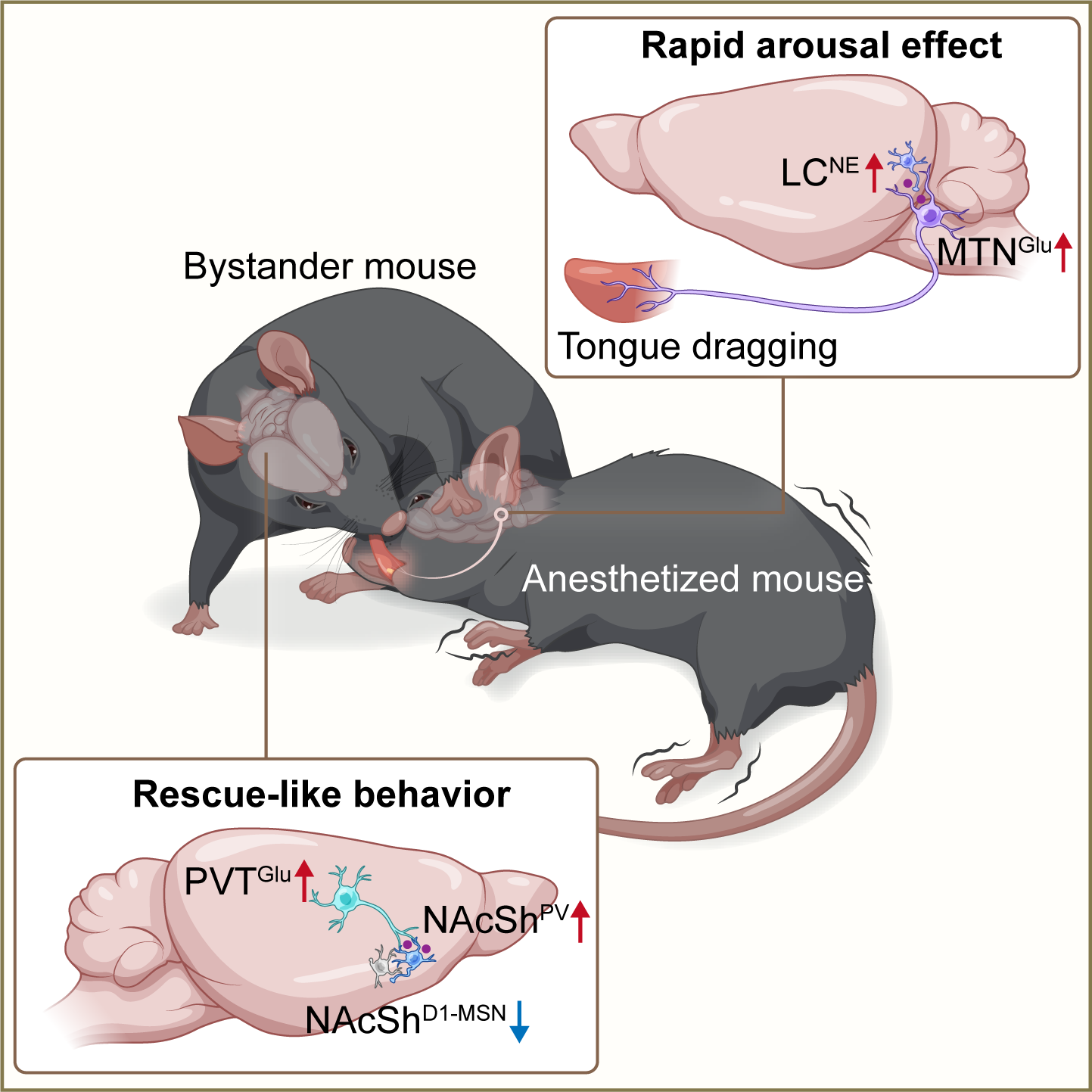Rescue-like behavior in a bystander mouse toward anesthetized conspecifics promotes arousal via a tongue-brain connection
Hits:

Impact Factor:11.7 Journal:Science Advances Abstract:Prosocial behaviors are advantageous to social species, but the neural mechanism(s) through which others receive benefit remain unknown. Here, we found that bystander mice display rescue-like behavior (tongue dragging) toward anesthetized cagemates and found that this tongue dragging promotes arousal from anesthesia through a direct tongue-brain circuit. We found that a direct circuit from the tongue → glutamatergic neurons in the mesencephalic trigeminal nucleus (MTNGlu) → noradrenergic neurons in the locus coeruleus (LCNE) drives rapid arousal in the anesthetized mice that receive the rescue-like behavior from bystanders. Artificial inhibition of this circuit abolishes the rapid arousal effect induced by the rescue-like behavior. Further, we revealed that glutamatergic neurons in the paraventricular nucleus of the thalamus (PVTGlu) that project to the nucleus accumbens shell (NAcSh) mediate the rescue-like behavior. These findings reveal a tongue-brain connection underlying the rapid arousal effects induced by rescue-like behavior and the circuit basis governing this specific form of prosocial behavior. Indexed by:Journal paper Volume:11 Issue:4 Page Number:eadq3874 Translation or Not:no Date of Publication:2025-01-22 Included Journals:SCI Links to published journals:https://www.science.org/doi/10.1126/sciadv.adq3874?url_ver=Z39.88-2003&rfr_id=ori:rid:crossref.org&rfr_dat=cr_pub%20%200pubmed -
|
|